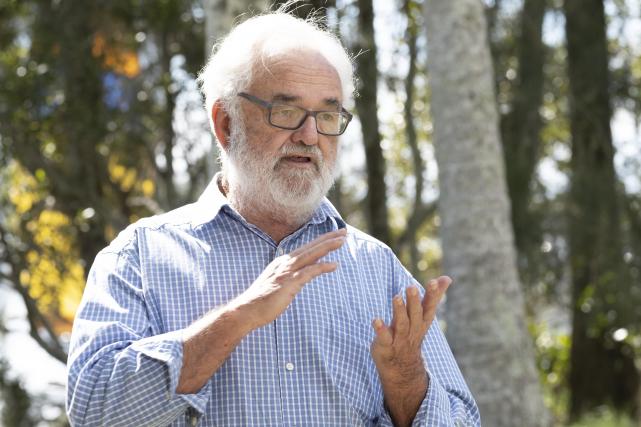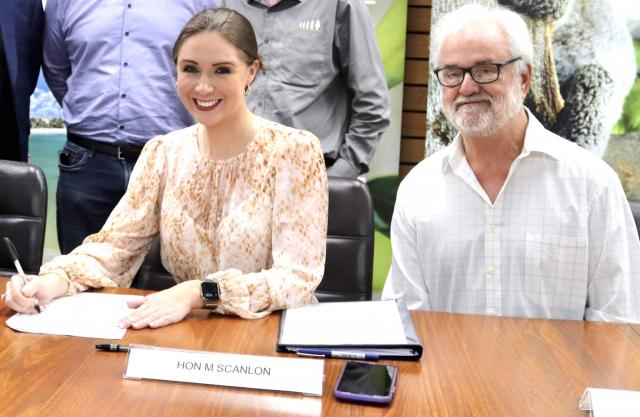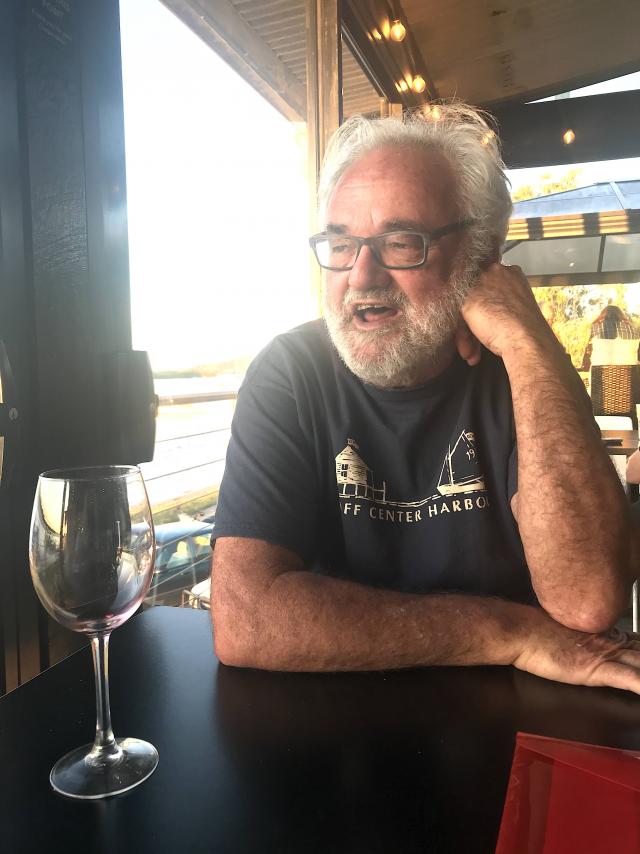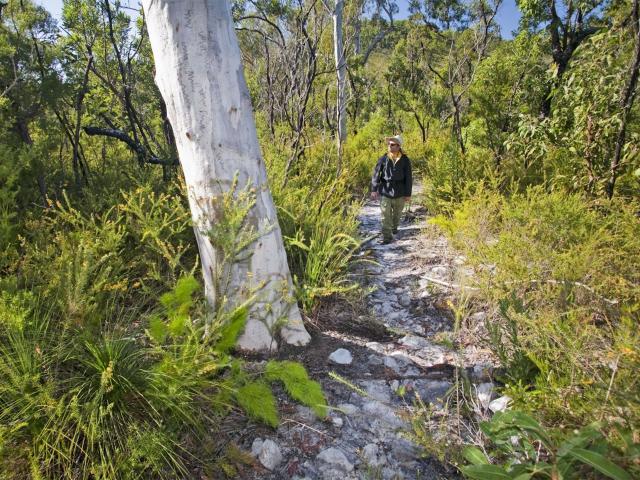A newsletter outlining the Noosa Parks Association position on the controversial Cooloola Great Walk ecotourism project sent sparks flying across social media platforms this month. PHIL JARRATT sat NPA’s veteran leader and currently honorary projects officer MICHAEL GLOSTER in the NT Hotseat to further explain the background.
Putting your name on the Parks Association newsletter about Cooloola Great Walk gave the project’s opponents a free hit by allowing them to claim that this was your view rather than the NPA’s. Can you clarify where the NPA majority sits on this issue?
There is a diversity of comfort level among our membership. Some are very comfortable, some less so, but we’ve had no resignations and very little public or private expression of concern by members. There is a level of trust that we’ll work it through. NPA has not received a single negative member response to my latest newsletter report.
Given that Noosa Parks Association’s entire history has been devoted to creating national parks that pretty much follow the cardinal principle, don’t you think this issue warrants a membership vote?
The 60-year-old culture at NPA is that leaders lead by doing what is right, not necessarily what is popular in the wider community. Culturally, we sort things out internally through respectful discussion, not votes.
The two principles on a collision course here are effectively the cardinal principle of national parks versus Native Title. Can you see any situation where the cardinal principle could override Native Title?
Every situation needs to be treated on its merits. In this case, we judged that neither principle should over-ride the other.
If the environmental lobby beat this up into another Franklin River, do you think the Queensland government would have to seek a political solution?
This won’t get anywhere near that.
We know that the Kabi Kabi people have voted in favour of this land use, but we also know that their leadership has expressed the desire to restrict traffic on the beach. Is that part of the blurring that often seems to surround this project?
What a lot of people don’t realise about the Indigenous Land Use Agreement between Kabi Kabi and the government is that the beach is part of it, which makes Kabi Kabi a very powerful voice in the matter of managing beach camping and driving numbers. Far more people across the Noosa-Cooloola community are concerned about the disgrace that beach camping and driving has become than are worried by about the latest great walk proposal. There is no blurring here. Both are in play as part of the government-Kabi Kabi land use agreement.
Some environmental leaders and some Kabi elders have gone public with the view that they want to abolish Native Title and replace it with some form of sovereignty. Is this a red herring?
For them it’s not, it’s a passionate cause. However, a clear majority of environmental leaders and Kabi Kabi elders do not support it. The recent Kabi Kabi vote to their Indigenous Land Use Agreement was 80 per cent for, 20 per cent against. Almost all the 20 per cent voting against the ILUA favour sovereignty over Native Title.
Can you shed any light on why the key decision makers have entered a cone of silence?
The process proscribed under the Australian Native Title Tribunal is that once the ILUA is signed by the parties, it is sent to the tribunal which triggers a 60-day period in which any eligible person can launch an appeal or make a submission that the process hasn’t been conducted properly. Only Kabi Kabi people can appeal or make a submission. That’s the reason for the cone of silence until the ILUA is registered.
If the Cooloola Great Walk goes ahead with some form of CABN’s glamping model, can Cooloola World Heritage listing ever happen, or is collateral damage?
Now that the proposed Great Walk has been revised to avoid ecologically sensitive areas, it does not threaten the cultural or ecological values UNESCO will judge Cooloola’s World Heritage re-nomination on. Once great walk sites were relocated well away from Cooloola’s patterned fens adjacent to the upper Noosa River and perched lakes like Lake Poona, the proposed Great Walk is no longer potential collateral damage. Kabi Kabi leaders are strongly supportive of World Heritage Listing for Cooloola, and the recent ILUA will strengthen the chances of realising it.
What role would you like to see the Parks Association playing as this moves forward?
Well, the background to the answer is that Kabi Kabi looked after country for many thousands of years before the Europeans arrived 200 years ago and started shunting them off it. Then 60 years ago we showed up (NPA) and started building a structure of national parks of 80,000 hectares in Noosa and 70,000 in Cooloola. To achieve that we had to knock down sand mining, water mining, coastal subdivisions from here to Rainbow Beach, tourist resorts, pastoral leases and jet airports. Most of these would have led to the affected land being freehold, and so not be eligible for Native Title. So, without really knowing it at the time, we held open the prospect for Kabi Kabi Native Title over Cooloola.
We’re hopeful these achievements give us street cred as we reach out to progressive sections of the Noosa community to join with us in building an improved Cooloola Section of the Great Sandy National Park, one we can all be proud of, one that can enhance the natural and cultural values of Cooloola rather detract from them, one that can enable Kabi Kabi people’s Cooloola aspirations rather than stifle them, one that can become an exemplar of practical reconciliation between Kabi-Kabi peoples and the wider Noosa-Cooloola community.
SIDEBAR
The Parks Association newsletter
The Queensland Government and Kabi Kabi peoples, the traditional owners of the Cooloola Section of Great Sandy National Park, signed a Cooloola Great Walk Indigenous Land Use Agreement on 12 November, 2022.
This historic agreement is for a six-day great walk from camp site three on the Upper Noosa River to Rainbow Beach, and a three-day great walk from Rainbow Beach to Double Island Point and Lake Poona returning to Rainbow Beach, providing over-night catered accommodation to paying guests. The longer walk will have five accommodation sites, the shorter walk will use two of these five sites.
Each of the sites is close to but hidden from the existing public Cooloola Great Walk trail that runs between Noosa North Shore and Rainbow Beach. Earlier proposals to locate sites adjacent to ecologically sensitive sites at Lake Poona and the Upper Noosa River have been abandoned, and now all five sites have a modest ecological footprint.
When the Queensland Government called for commercial expressions of interest for the provision of a Cooloola Great Walk, two principles were set on a potential collision course:
• The prime purpose of National Parks such as Cooloola is the conservation of natural and cultural values, and hence should remain free of commercially provided over-night catered accommodation. This principle has been widely followed for over a century.
• The Traditional Owners of Cooloola, Kabi Kabi peoples, have a moral and legal right to co-own and co-manage Cooloola with the State, and to benefit culturally and financially from a commercial Cooloola Great Walk with overnight catered accommodation. This principle flows from the advent of Native Title in the early 1990s.
With the State Government committed to proceeding with a commercially provided Cooloola Great Walk subject to Kabi Kabi people’s support, the choice for those with an interest in Cooloola’s future became clear – either support one of the above principles at the expense of the other or support a middle ground balance that retains the most important aspects of both.
Noosa Parks Association favours such a middle ground balanced approach.
The key Cooloola Great Walk decision makers are Kabi Kabi peoples, the Queensland Government, and CABN – the company selected by the government to develop the CGW following an expression of interest process.
As opportunities arose, NPA has held conversations with all three key decision makers exploring the ways and means of achieving a commercial Cooloola Great Walk we can all be proud off, one that can enhance the natural and cultural values of the Cooloola Section of the Great Sandy National Park rather than detract from them, one that can enable Kabi Kabi people’s Cooloola aspirations rather than stifle them, one that can become an exemplar of practical reconciliation between Kabi-Kabi peoples and the wider Noosa-Cooloola community.
It’s still early days. From here on in the devil will be in the detail. But on balance, so far, so good.
– Michael Gloster, NPA Project Officer, Noosa, Tewantin and Cooloola National Parks










